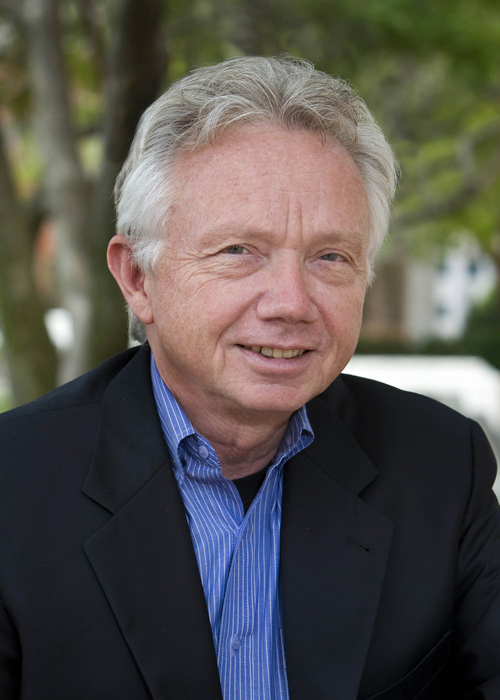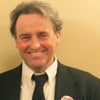Building for Health: A Talk with Richard Jackson, MD, MPH
Interview by Steve Heilig

How does where we live impact our health? It's a big and complex question, but Richard Jackson, MD, MPH is leading the way towards answers -- and interventions.
Jackson is a longtime leading figure in public health circles. Trained in pediatrics at UCSF and public health at UC Berkeley, he is currently professor and chairman of Environmental Health Sciences at UCLA's School of Public Health. Prior to that he has been California's State Health Officer and Director of the CDC National Center for Environmental Health.
Over the past decade much of Jackson's focus has been on the "built environment" -- our homes, cities, streets, institutions -- affect our health. He has served on the board of directors of the American Institute of Architects and has written and spoken extensively in this arena. He has both recent books and a new television series titled Designing Health Communities, which premieres on PBS in February and is available on DVD. Episodes in the 4-part series include "Retrofitting Suburbia", "Rebuilding Places of the Heart," "Social Policy in Concrete," and "Searching for Shangri-La." Such titles might lead one to suspect Dr. Jackson is a man with his head in the clouds, but he remains a pragmatist who is able to retain lofty goals in terms of healthy futures.
***
You trained as a clinician; how did you evolve into a public health leader?
For the first years of my career I was a traditional pediatrician, and then spent a couple more decades in public health, mostly doing environmental health, especially impacts on children's health, for example from pesticides or air pollutants. Over time, I became convinced that we're not going to deal with air and water pollution as long as we keep paving over ever more landscape and driving everywhere, nor will we deal with climate change unless we figure out how to better build our homes, communities, transportation systems and so forth. So I kept coming back to what we now call the "built environment" and that led to my books and this new television series.
Why a television presentation of these complex issues?
I became increasingly aware that though I was regularly talking to clinicians, scientists, and other professionals, the general public was not hearing these messages, particularly poorer people who bear the brunt of the preventable diseases in our society. We need to make this information accessible to "the 99%," if you will, and this led to the new public broadcasting series, with the companion book. And in that book I decided to become a bit more personal, to try to better engage the average person.
For clinicians, some of the issues you deal with might seem too broad and complex, even abstract, to deal with in their work.
In my medical training, I was taught to confront the patient's reality in a focused, direct way, and we had little time to deal with broader issues affecting them. But we know that health is so much a result of how and where people live. Tobacco is the prime example - as every clinician learns, we can tell patients to stop smoking until we deeply discouraged, but if we really want to makes changes, we must make smoking more expensive, less appealing, to restrict where smoking happens, and to set up a constellation of factors that drive healthier behaviors. Intervening in that constellation is a very complex maneuver, I agree, but we can do it in worthwhile ways.
Can you give some examples of improvement in recent years?
Yes, and some are from San Francisco, in fact. The built environment is where we spend 99% of our time, and we can construct things to encourage physical activity and socialization, such as the bandshell or the bike trails and walkways in Golden Gate Park, or we can isolate people in places like the Hilton in the Tenderloin or in schools that are built like fortresses, places that are only reached by cars and where only processed food is available. The Octavia flyway coming down and turning into something better is another improvement. For another example, think of the Embarcadero in the 1980s - walking there was loud, dark, dirty and scary; nobody wanted to go there. Thanks to public will, plus some help from the 1989 earthquake, we now have a wonderful place, that is actually irresistible!
Back to clinical settings; what do you tell medical colleagues in your talks in this arena?
I learned much from Marty Gerschman MD, a leading pediatrician in San Francisco for many years; he once told me he was worried most about how stressed his patients' families were over nonmedical issues like paying bills, not feeling safe to let their kids play and exercise outdoors, and such. My pediatric and internal medicine colleagues often tell me they are at their wits' end about their many overweight, sedentary, pre-diabetic, depressed patients; I tell them the system is rigged against those patients and the doctors. The best treatment is often good nutrition and more exercise, but that requires more than just us telling patients to eat better and get out more, when they too often cannot easily do that.
Obviously, the average physician is not going to redesign the main streets in Fresno, but we can speak out with patients and parents and politicians and say we need more accessible healthy food, no junk food in schools, more parks, more farmer's markets, more parks, bike routes in town, and so on. And this is also where must doctors come in as advocates. Who else is better qualified to speak to the well-being of the people of our state?
Again, these are huge projects where changing things seems daunting....
True, we're talking about reversing two or three generations worth of building decisions. It is a major task, no denying that. There are growing pains as we learn to re-do it right. But it is happening in more and more places; New York City has great new bikeways, Copenhagen has become much more livable in just a generation. We have to start by looking at how we build and rebuild with a view towards health, and towards what is best for our children and their children. This is about the future. Really it's re-framing goals from what turns the most profit or is most economical in the short term, and towards a longer view, because when you build you're really building for 3 or 4 generations or more, not the next five years. This is why the recent National Academy of Sciences panel I served on regarding Health Impact Assessment strongly recommends its use: every major plan or project has a health impact, and we need to be go into big decisions thinking about health, not just environment.
You write in your newest book that you have been attacked for some of your views; why?
There are people who have accused me for being a disloyal American for worrying about the society at large, about justice, but I argue that this is in the truest American tradition, and that those who hold we should just be concerned about ourselves are out of step with American ideas, not I.
You do seem optimistic, despite the odds. How do you retain a positive outlook?
Well, as I've said, there has been real progress in some areas. If you look at these issues, it is easy to become discouraged, between the poor economy, the thoughtless and heartless built environment, the endocrine disrupters and other chemicals, and inequality and more. But what gives me optimism is my students. If you look at many young people now, they have no patience with reductionist, atomized approaches where every problem is isolated, but they see we have to come up with systems approaches and solutions. And good solutions solve multiple problems. That's what working on better built environments is about.
****
Dr. Jackson's books:
Making Healthy Places: Designing and Building for Health, Well-being and Sustainability. Dannenberg, Frumkin, Jackson; Island Press www.makinghealthyplaces.org
Designing Healthy Communities, Richard Jackson with Stacy Sinclair: www.josseybass.com/go/jackson
Dr. Jackson's PBS Series: "Designing Healthy Communities"
www.designinghealthycommunities.org
Another version of this interview appears on the site of the Collaborative on Health and the Environment: http://www.healthandenvironment.org/articles/homepage/10216
It will also appear in San Francisco Medicine, the journal of the San Francisco Medical Society. http://www.sfms.org
